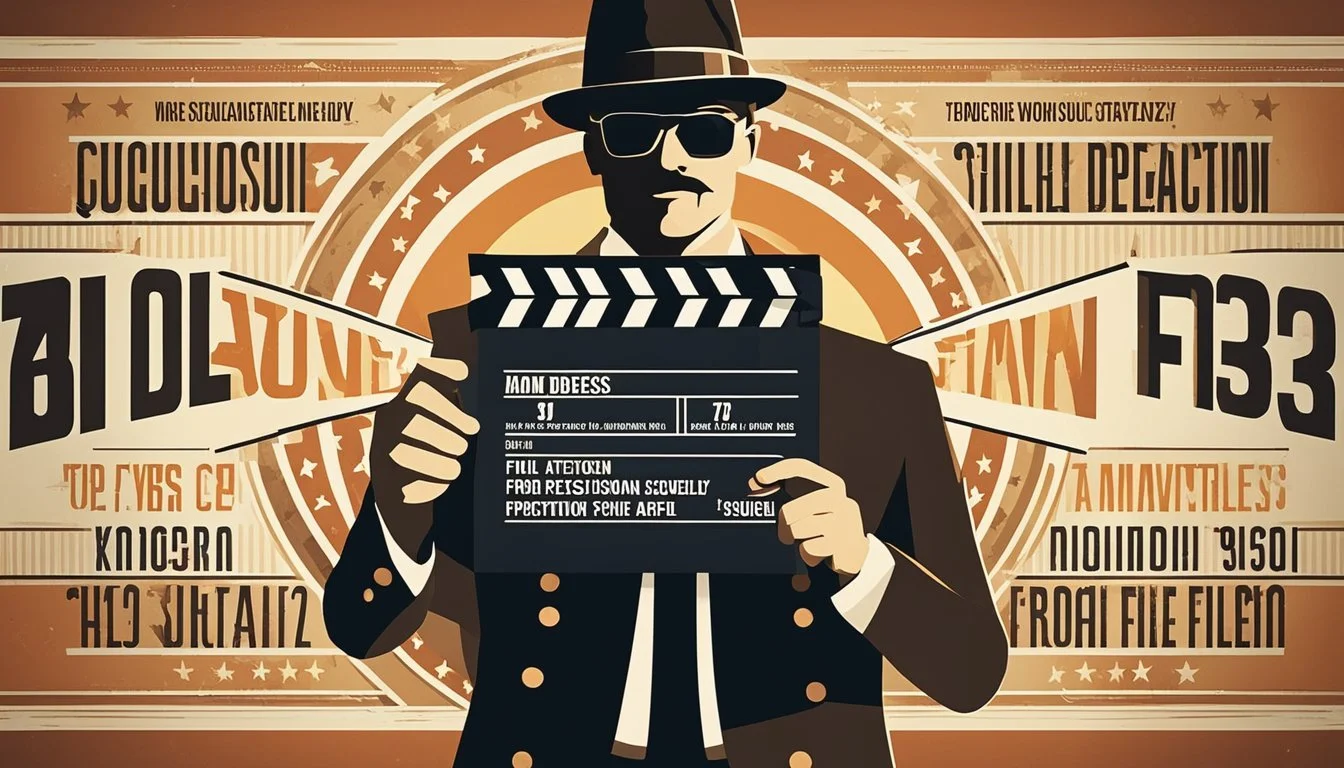7 Proven Strategies for Creating Successful Film Sequels
Expert Insights and Tips
Creating a sequel to a beloved film is a challenging yet rewarding endeavor. Sequels have the difficult task of honoring their originals while expanding the storyline and characters in fresh ways. They must capture the essence that made the first film successful and find innovative methods to keep audiences engaged and entertained.
What makes a sequel truly shine is its ability to build upon the foundation laid by its predecessor while introducing new elements that excite and surprise the audience. This article delves into seven proven strategies that filmmakers can rely on to craft sequels that stand out, ensuring that they not only meet but exceed viewer expectations.
1) Develop a Strong Story Arc
A strong story arc is essential for a successful film sequel. The story arc serves as the backbone of the narrative, guiding the audience through the protagonist’s journey.
The arc should include clear stages: exposition, rising action, climax, falling action, and resolution. These stages create a cohesive and engaging experience for viewers.
In the exposition, introduce new elements while maintaining continuity with the original film. This helps set up the stakes and builds interest.
During the rising action, escalate conflicts and challenges, ensuring they are logical extensions of the previous plot. This keeps the narrative dynamic and engaging.
The climax should provide a compelling turning point. It’s a critical moment where the protagonist faces the greatest challenge, delivering high emotional impact.
Following the climax, the falling action should begin resolving the plot threads. This creates a sense of progression and satisfaction.
A clear resolution is vital. It should address key narrative questions, leaving the audience feeling the story is complete.
2) Retain Core Characters
A key element in successful sequels is the retention of core characters. These characters form the backbone of the original narrative, creating a sense of continuity for the audience.
Maintaining the same characters allows the story to build on established relationships and conflicts. This deepens the audience’s connection to the characters and the unfolding plot.
Core characters often have unresolved arcs or potential for further development. Sequels provide an opportunity to explore these dimensions, adding new layers and greater depth to their personalities and storylines.
Additionally, familiar faces create a seamless transition from one installment to the next. This consistency can help maintain viewer engagement and support long-term franchise success.
Audiences return to sequels expecting to see their favorite protagonists and antagonists face new challenges. Retaining these characters ensures that the essence of the original story remains intact while allowing room for growth and innovation.
Focus on evolving the characters in meaningful ways. This keeps the narrative fresh while honoring the elements that made the original film successful.
3) Capture the Original Tone
Maintaining the original film's tone is crucial for a successful sequel. The tone encompasses the emotional atmosphere and style that resonated with audiences. Keeping it consistent ensures that the sequel feels like a true continuation.
Filmmakers should revisit the original film to analyze key elements that established its tone. This includes examining the visual style, dialogue, and overall mood. Paying attention to these details helps in recreating the essence that made the original successful.
One way to achieve this is by involving the same creative team. When possible, retaining the original director, screenwriter, and key crew members can help preserve the tonal consistency. Their familiarity with the original material provides valuable insights.
Another important aspect is the music score. Using the same or a similar soundtrack can evoke the same emotions and bring a sense of familiarity to the sequel. It's a powerful tool for maintaining the film’s emotional impact.
Lastly, it’s essential to consider the performances. Casting the same actors or ensuring new ones capture the original characters’ essence keeps the tone consistent. Authentic performances contribute significantly to the film's atmosphere.
By focusing on these aspects, filmmakers can ensure the sequel retains the original's charm and appeal.
4) Address Fan Expectations
A crucial aspect of creating a successful film sequel is understanding and addressing fan expectations. Fans often develop strong emotional connections to the characters and storylines of the original film. When crafting a sequel, filmmakers must honor these connections while introducing fresh elements to keep the narrative engaging.
Balancing familiarity and innovation is key. The sequel should revisit beloved characters and settings, providing a sense of continuity. At the same time, it must offer new experiences and developments to avoid becoming repetitive. This balance ensures that fans feel both comforted and excited by the next installment.
Incorporating fan feedback can be beneficial. Filmmakers can gauge audience reactions to the original film through reviews, social media, and fan forums. This feedback helps identify what aspects resonated most with the audience, guiding creative decisions for the sequel.
Moreover, it’s helpful to manage fan expectations realistically. Marketing and promotional materials should clearly convey what the sequel aims to deliver, avoiding overpromises. This prevents disappointment and sets a positive tone for audience reception.
By thoughtfully addressing fan expectations, filmmakers can create sequels that retain the core essence of the original film while still providing new and compelling stories.
5) Introduce New Conflicts
Introducing new conflicts in a sequel is crucial to keeping the story fresh and engaging. One way to achieve this is by expanding on the protagonist's challenges. Present them with dilemmas that differ from those in the original film.
Adding new antagonists can also provide fresh conflicts. Whether it's a more formidable adversary or a complex villain, this change can reignite audience interest.
Changing the setting can introduce unforeseen complications. A new environment often leads to new problems that the characters must navigate, creating tension and intrigue.
Characters developing personal issues can add depth. Unresolved internal conflicts or new emotional struggles can provide complexity, making the sequel more compelling.
Finally, shift alliances and relationships. Characters forming unexpected bonds or facing betrayals can create dynamic and unpredictable storylines. These fresh conflicts enhance the narrative and keep audiences invested.
6) Hire Talented Writers
Hiring talented writers is essential for creating successful film sequels. The quality of the screenplay can make or break the movie. Talented writers bring fresh perspectives and innovative ideas. They are able to build on the original story while adding new and engaging elements.
Experienced writers understand the importance of consistency in character, tone, and style. This ensures that the sequel feels like a natural continuation of the original film. Furthermore, they have the ability to introduce new characters and plotlines that can captivate the audience.
In addition, skilled writers possess a deep comprehension of narrative structure. They know how to craft compelling arcs that maintain interest throughout the film. Their expert storytelling skills are crucial in making the sequel both exciting and coherent.
Successful screenwriters often have a strong track record and industry connections. It's beneficial to hire writers who have proven their ability to deliver high-quality scripts. This increases the chances of the sequel being well-received by both critics and audiences.
Finally, collaboration is key. Talented writers can work effectively with directors, producers, and other creative team members. This synergy is vital to ensuring that everyone’s vision aligns and is successfully executed on screen.
7) Use High-Quality CGI
Utilizing high-quality CGI can significantly enhance the visual appeal of a film sequel. CGI, or computer-generated imagery, has evolved tremendously since its early days and is now integral in modern filmmaking.
Including convincing and realistic CGI can create more immersive worlds. This technology allows filmmakers to depict scenes and characters that would be impossible or impractical to create using traditional methods.
Successful sequels often need to surpass their predecessors in terms of visual effects. High-quality CGI can achieve this by delivering spectacular visuals that capture the audience's imagination while maintaining consistency with the original film.
Films like "Jurassic Park" and "The Matrix" demonstrated the transformative power of CGI. These movies showed that even a little CGI, when done well, can leave a lasting impact on the audience. Sequels can leverage similar techniques to push the boundaries further.
Integrating CGI effectively requires collaboration between directors, VFX artists, and the entire production team. They must ensure that CGI complements the storyline rather than overshadowing it. Proper planning and execution are vital for blending CGI seamlessly with live-action footage.
In the current cinematic landscape, television series such as "Game of Thrones" have also set new standards for high-quality CGI. Even on a smaller screen, the series has used CGI to create epic landscapes and grand battles, proving its versatility and importance.
High-quality CGI not only enhances the viewing experience but also plays a crucial role in maintaining fans' interest. Investing in superior CGI can be a game-changer for any film sequel.
Understanding the Market
Analyzing the market is essential for a film sequel's success. This involves understanding the specific audience demographics and identifying prevailing market trends.
Analyzing Audience Demographics
Before launching a sequel, it is crucial to identify the target audience. Understanding age, gender, location, and interests helps tailor the marketing strategy.
Surveys and Polls: Conducting surveys can reveal valuable insights about audience preferences.
Previous Film Data: Examining the demographics of the original film's audience provides a reliable foundation.
Social Media Insights: Platforms like YouTube, Twitter, and Facebook offer detailed audience analytics to refine the target groups.
Identifying Market Trends
Keeping up with current market trends can significantly impact a sequel's marketing success. Trends in genre popularity, technology use, and peer influences are essential.
Genre: Monitor which film genres are currently trending and adapt the marketing approach accordingly.
Technology: Utilize emerging technologies, such as VR and AR, for an engaging promotional experience.
Cultural Influence: Be aware of current cultural phenomena that may influence viewer preferences.
By analyzing these demographics and trends, filmmakers can more effectively reach the desired audiences and enhance their marketing strategies.
Crafting a Compelling Storyline
Successful film sequels require stories that captivate audiences by staying true to the original while introducing fresh elements. This balance is key to maintaining viewer interest and building franchise loyalty.
Maintaining Continuity and Consistency
Maintaining continuity ensures that the sequel feels like a natural extension of the original. This involves retaining core themes, settings, and character arcs. Any shifts in the storyline or character traits can confuse or alienate the audience.
Consistent visual style and tone help reinforce this continuity. Using the same director or key creative team from the original can greatly contribute to this. Viewers appreciate seeing familiar elements that remind them why they enjoyed the first film.
Introducing New Characters
Introducing new characters breathes fresh life into the narrative and keeps it dynamic. These characters should add to the story without overshadowing existing ones. Effective new characters often bring new challenges or perspectives, enriching the plot.
These characters should have well-developed backgrounds and motivations. They need to feel integral to the storyline. Sometimes, new characters can even provide a bridge for future sequels, ensuring the franchise's longevity.
Effective Marketing and Promotion
Employing creative marketing strategies can greatly influence the success of a film sequel. Key approaches include creating anticipation through teasers and trailers and actively engaging fans on social media platforms.
Creating Hype with Teasers and Trailers
Releasing teasers and trailers strategically is crucial for building anticipation. Starting with a teaser campaign months before the official release can pique interest. Short clips and behind-the-scenes footage can be effective, providing a glimpse without revealing major plot points.
The timing of these releases matters. Teasers can precede trailers, leading up to the final full-length trailer. This staggered release creates a cascading effect of excitement. Additionally, leveraging premiere events for trailer launches can further amplify reach, especially when partnered with influential platforms and personalities.
Engaging Fans on Social Media Platforms
Active engagement on social media is essential for modern film promotion. Utilizing platforms such as Twitter, Instagram, and TikTok allows direct interaction with fans, fostering a community around the sequel. Regular updates, interactive content like polls and Q&A sessions, and shareable posts are vital components.
Creating viral challenges themed around the film can further amplify reach. Collaborations with social media influencers can bring the film to a broader audience. Additionally, exclusive content, such as behind-the-scenes footage or sneak-peek clips, can be shared to keep the audience engaged and talking about the sequel.







